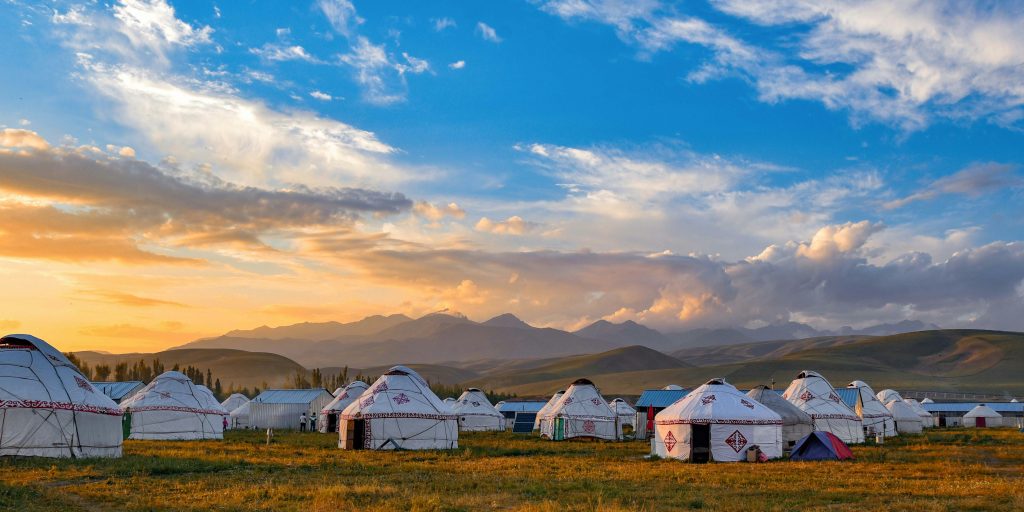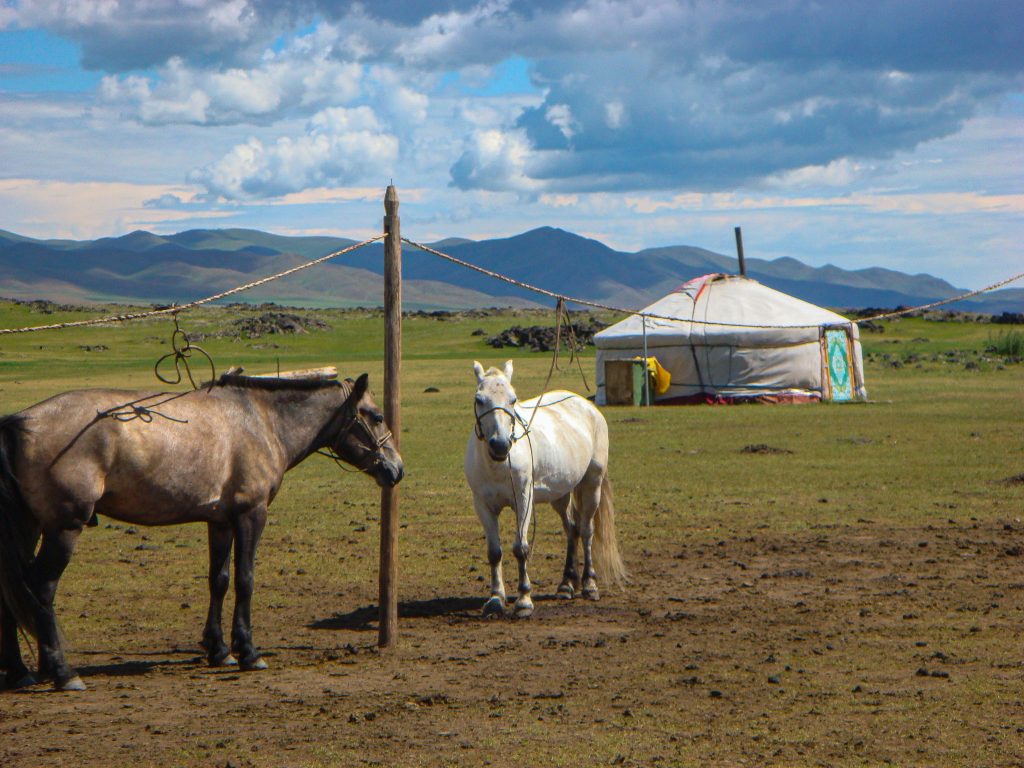Beneath Mongolia’s endless sky, grasslands and deserts stretch out, dotted with gers—the round homes at the center of nomadic life. Here, tradition and nature thrive together, inviting travelers to experience Mongolia’s beauty, community, and deep bonds with the land.
Gers, the iconic round homes of Mongolia’s nomads, can be found everywhere across the country’s vast landscapes, from the grassy steppes to the high mountains and the edge of the desert. Staying in one is not only an unforgettable cultural experience but also a way to understand how Mongolian families have thrived in harmony with nature for centuries. Whether you are traveling through central Mongolia, exploring the lake regions in the north, or venturing into the southern deserts, ger stays welcome visitors into the heart of tradition and hospitality.
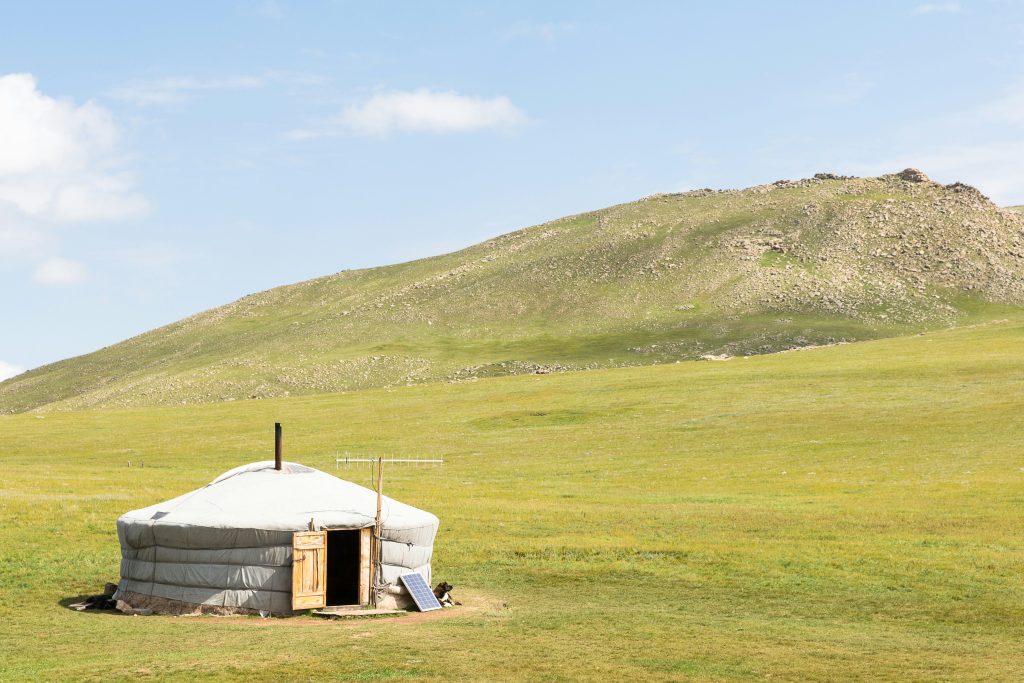
Photo by Joshua Alan Davis on Unsplash
The Gobi Desert: Wonder, Wisdom, and Community
One of the most striking places to experience life in a ger is the Gobi Desert. Far from being empty, the Gobi is alive with dramatic landscapes and resilient communities. Here, dunes shift in the wind, the Flaming Cliffs glow red at sunset, and canyons like Yolyn Am remain cool and green even during the summer heat. Each night the desert sky fills with stars so bright that travelers often feel surrounded by the universe itself.
Visitors come for the scenery but quickly discover the people. Families host travelers in gers, sharing camel rides across the sands, fireside stories, and glimpses into nomadic traditions. The Gobi is not just a desert backdrop—it is home to herders, conservationists, and entrepreneurs who combine ancient knowledge with modern resilience. Many households still move seasonally, following pasture and water, while new initiatives bring solar power, livestock tracking, and market access. By choosing community-based ger tourism, travelers help these families protect their way of life, safeguard biodiversity, and build brighter futures for the next generation.
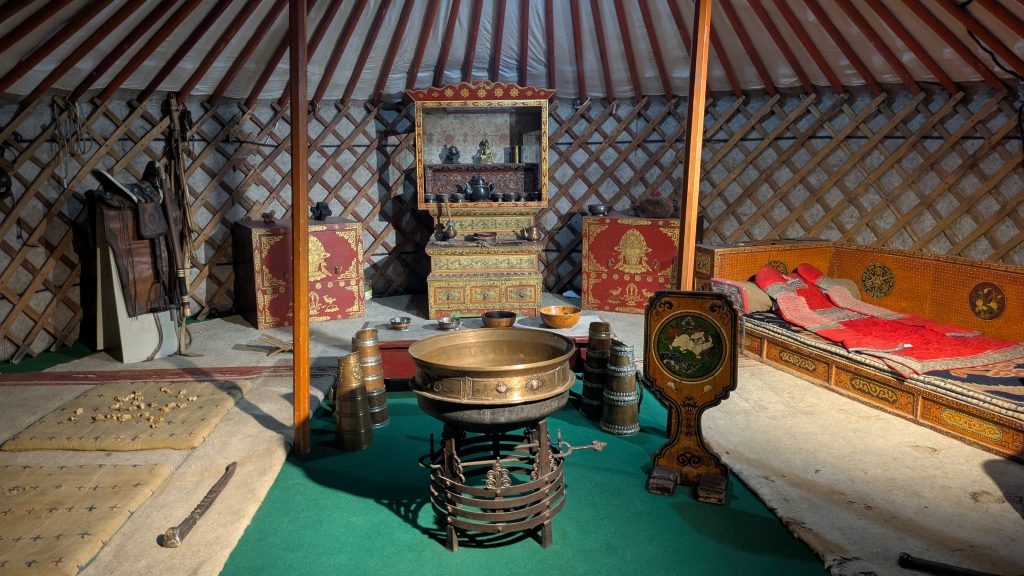
Inside a ger at the National Museum of Mongolia, Ulaanbaatar – Photo by Catherine Germier
Ger Stay: What Makes a Ger Unique
Each ger is wrapped in thick felt made from sheep’s wool, an ingenious material that keeps the interior warm and welcoming even in winter’s deep cold. Making felt is a labor of patience and teamwork: shearing the sheep, cleaning and carding the wool, then rolling and pressing it until the layers are dense enough to insulate against Mongolia’s legendary climate. Every sheet tells a story of skill passed down through generations.
The ger’s structure is as practical as it is symbolic. Its round base comes from the khana, a foldable wooden lattice frame that is lightweight and portable, allowing families to move with the seasons. At the center is the toono, the circular crown that acts as both skylight and vent. Sunlight streams through during the day, while smoke escapes from the stove at night. Symbolically, the toono connects the household to the sky above. Brightly painted rafters, vivid doors, and the ever-south-facing entrance fill the space with color and warmth. Ropes made of animal hair or wool secure the structure tightly, anchoring it against strong winds and binding it into harmony with the land.
Assembling a ger is always a communal act. Elders share guidance, adults raise the framework, and children participate with laughter and curiosity. The process transforms simple wool and wood into a welcoming home that holds both practicality and spirit.
Gers: Gentle by Nature
Life in a ger reflects a deep respect for nature. Every material comes from local forests and herds, supporting traditional skills while providing sustainable livelihoods. When families move, they pack up their gers quickly, leaving almost no trace on the fragile land. The circular design conserves heat, reduces fuel use, and encourages families to rely on sunlight for light and warmth.
Inside, the ger becomes a classroom and a gathering space. Skills such as felt making, rope twisting, and wood carving are passed from generation to generation. Songs, stories, and customs keep memory alive, turning the home into both a shelter and a cultural treasure. For visitors, sharing this space means slowing down, rediscovering simplicity, and experiencing a way of life built on balance with the environment.
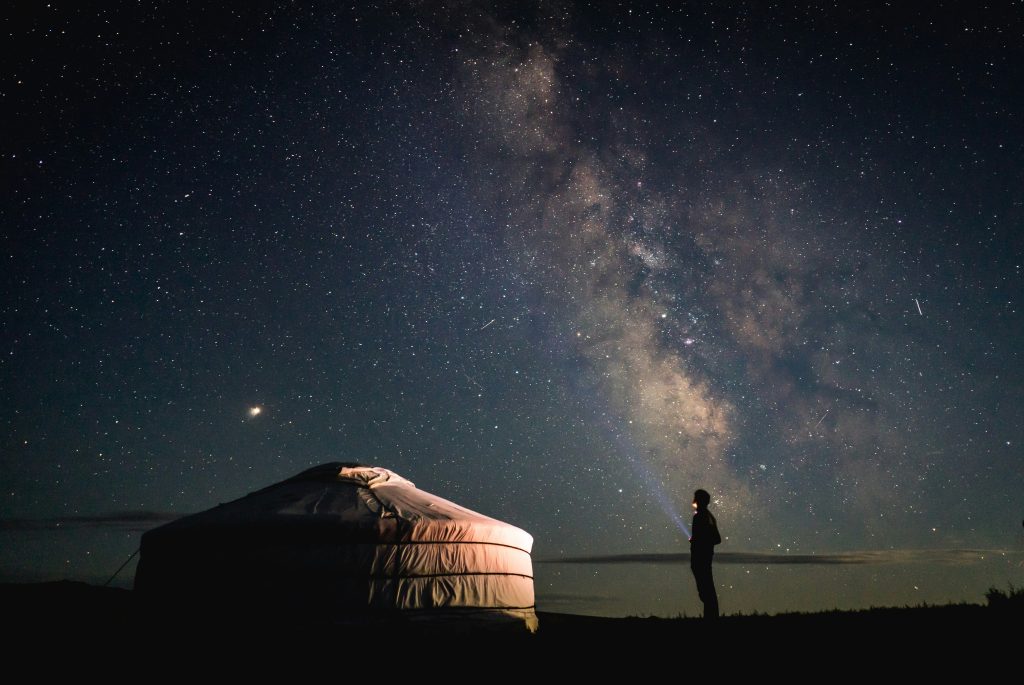
Photo by Patrick Schneider on Unsplash
Positive Impact: Building Brighter Futures
Community-based ger tourism has a ripple effect that reaches far beyond the individual traveler. Choosing family camps or responsible operators such as Ger to Ger and Three Camel Lodge provides vital income to herders, guides, and artisans. These choices support children’s education, expand access to healthcare, and strengthen women’s cooperatives. They also fund conservation projects that protect wildlife like the endangered khulan, a wild ass that symbolizes the resilience of the Gobi.
Partners and local organizations reinvest in solar power, water systems, and sustainable infrastructure. Public awareness campaigns and biodiversity initiatives encourage stewardship, blending ancient knowledge with new technology to build a more resilient future.
Living and Learning Together
A ger stay is never just accommodation; it is participation in daily life. Guests wake to the sound of livestock outside and the scent of boiling milk tea inside. They join in herding, felt making, and cooking, learning through practice and laughter. Meals become opportunities for storytelling, and nights are filled with music beneath starlit skies. Ancient customs come alive, not in museums but in the warmth of family homes.
Travelers leave with more than photographs. They carry friendships, lessons, and the knowledge that their visit has supported people and landscapes at the heart of Mongolia. To step into a ger is to step into the timeless circle of connection—between people and nature, past and future, host and guest. Mongolia offers not just places to see but ways of belonging, where each sunrise brings hope for travelers and for the communities welcoming them.
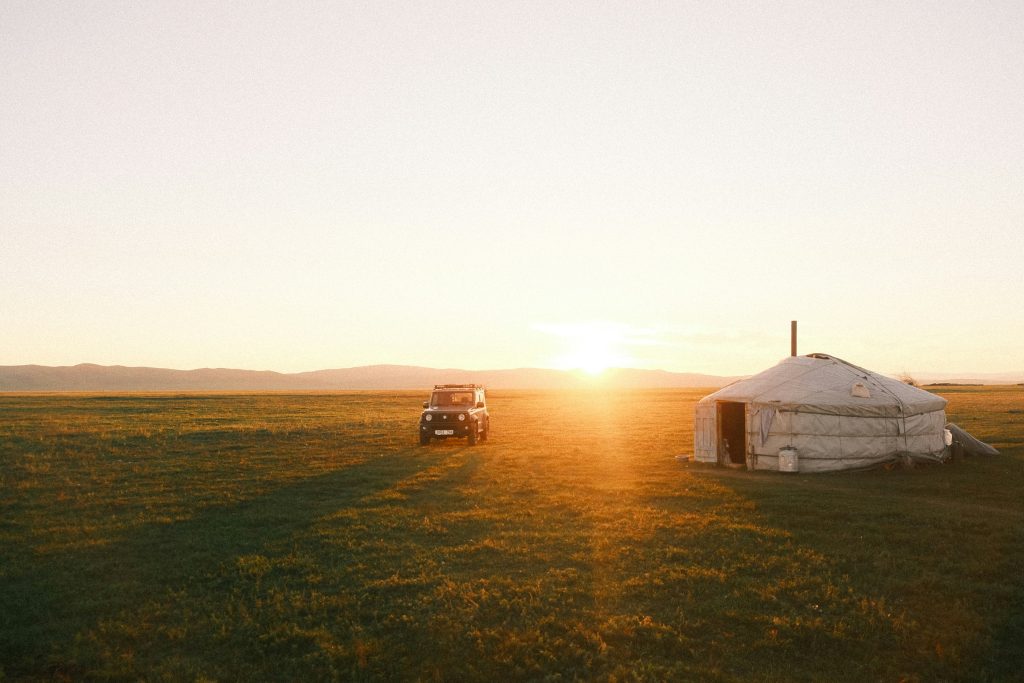 Photo by Manduul Amar on Unsplash
Photo by Manduul Amar on Unsplash
Where to Book Your Ger
Support Mongolia’s people and natural heritage by booking directly or through:
- Ger to Ger: gertoger.org for family and community stays.
- Three Camel Lodge
- Gobi Mirage Lodge
Each ger camp, whether modest or luxurious, gives travelers a key role in a story of growth, pride, and renewal. Mongolia’s adventure becomes a shared journey, where the positive impact endures long after the dust of the steppe settles.

